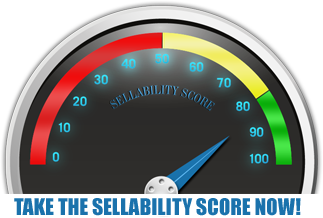 Normally, a business owner who’s looking to sell has to keep their intentions close to the chest. You don’t want to upset your employees, your customers or the vendors; any of which could cause a major disruption in your operation and be a detractor to potential buyers. Since selling your business can be both an emotional and overwhelming process, it’s important to consult VR Business Sales. We will facilitate the process to where you will be able to continue operating the business as normal while we look for a qualified buyer. A qualified buyer will want to see a thriving and well-operated business if they are put down a substantial financial investment.
Normally, a business owner who’s looking to sell has to keep their intentions close to the chest. You don’t want to upset your employees, your customers or the vendors; any of which could cause a major disruption in your operation and be a detractor to potential buyers. Since selling your business can be both an emotional and overwhelming process, it’s important to consult VR Business Sales. We will facilitate the process to where you will be able to continue operating the business as normal while we look for a qualified buyer. A qualified buyer will want to see a thriving and well-operated business if they are put down a substantial financial investment.
Each VR business intermediary is equipped with the tools and experience to ensure that you don’t make any pivotal mistakes. Below are some areas that we will help you stay on the track with to get you to completion of the deal.
Pricing the Business at the Fair Market Value
Although many sellers would like to see their business’ worth based on the time, effort and finances they have spent, you don’t want to go in and place a high price on a business. When you make that decision to sell, you have to be able to understand what buyers are looking for so that you can come to win/win arrangement. If the price you’re looking for is higher than what the fair market value is, chances are you will have a difficult time finding a buyer who’s willing to write a check.
Maintaining Confidentiality
Any type of disclosure outside of the two parties involved can detonate the deal. It’s critical that all precautions are taken as to not disturb the running of the business operation. Employees can and will run if they feel they’re not working at a stable company. Therefore, make sure all correspondence stays away from the business. Each VR business intermediary maintains constant contact with both you and the buyer to make sure all questions are being answered and no breaches in confidentiality are made.
Never Sell Impulsively
It’s normal for a business owner to burn out and decide at the drop of a hat to find a buyer to take over the business immediately. However, do not make a rash decision. At VR, we sit with you to make sure you plan ahead both carefully and accordingly. An accelerated business sale can result in leaving a lot of money on the table if you don’t take your time.
We will assist you in all aspects of the process from:
- Business valuation
- Market analysis to assess opportunities for selling
- The packaging and marketing of the business
- Qualification of prospective purchasers
- Negotiation services
- Contract preparation, due diligence and post closing procedures
Anticipate the Buyer’s Requests
A buyer is going to want appraisals of the property of the business, the machinery and equipment, inventory, intellectual property and goodwill. Due diligence and investigation takes time on the buyer’s end, so it’s important to have your ends covered before the business goes to market. At VR, we will assist you in getting all areas of your business prepared for the buyer.
Focus on the Structure of the Deal
Any seller will want all cash at closing, but that seldom happens without some sort of financing involved. In many business sales, the structure is more important than the price; therefore, make sure you are able to see what needs to be done in the structure of the deal so that it doesn’t become a deal breaker.
Being Flexible on the Terms
You are not going to win every point of contention. It’s important to compromise when you need to, and save your battles for the most important issues in the deal. If you try to win every battle that arises, the buyer may walk away. You don’t want to come off as being inflexible, and your VR business intermediary will help you understand which areas you should show some willingness to step back and accept the buyer’s point.






 When considering selling your business, every buyer expects a business of great value as an investment. Depending upon the qualified candidate, it could be an entrepreneur with a specific set of needs that motivates them to invest in an established business or it could be a private equity group that sees the benefit in acquiring a business based on their strategy for future growth. Whatever the reasoning might be, the challenge is what can you do to attract the right buyer? Here are 9 steps to take in order to reel in the best buyer during the
When considering selling your business, every buyer expects a business of great value as an investment. Depending upon the qualified candidate, it could be an entrepreneur with a specific set of needs that motivates them to invest in an established business or it could be a private equity group that sees the benefit in acquiring a business based on their strategy for future growth. Whatever the reasoning might be, the challenge is what can you do to attract the right buyer? Here are 9 steps to take in order to reel in the best buyer during the 
 The answer to the question asked in the title is, “It all depends!” There are all sorts of studies, surveys and the like suggesting that as more and more “baby-boomers” reach retirement age, the market will be flooded with companies for sale. The consensus is that with these privately-held company owners reaching and nearing retirement age, the time to sell is now. In one survey, 57 percent of business owners said that their age was the motivating factor for exiting their business. In another one, 75 percent of owners with revenues between $1 million and $150 million stated that they looked to sell within the next three years. Reading all of this information, one gets the feeling that over the next few years almost every privately-held business will be on the market.
The answer to the question asked in the title is, “It all depends!” There are all sorts of studies, surveys and the like suggesting that as more and more “baby-boomers” reach retirement age, the market will be flooded with companies for sale. The consensus is that with these privately-held company owners reaching and nearing retirement age, the time to sell is now. In one survey, 57 percent of business owners said that their age was the motivating factor for exiting their business. In another one, 75 percent of owners with revenues between $1 million and $150 million stated that they looked to sell within the next three years. Reading all of this information, one gets the feeling that over the next few years almost every privately-held business will be on the market. Obviously, serious buyers want to carefully look at the financials of a company under consideration and all of the other major aspects of the company. However, there are a few other areas that the serious buyer will investigate that sellers may overlook.
Obviously, serious buyers want to carefully look at the financials of a company under consideration and all of the other major aspects of the company. However, there are a few other areas that the serious buyer will investigate that sellers may overlook.